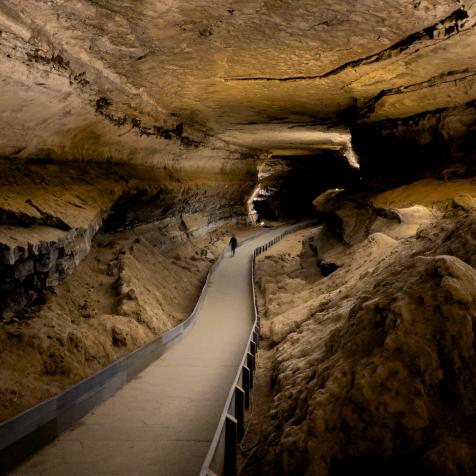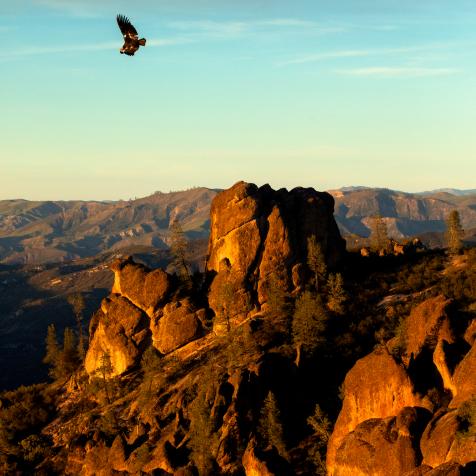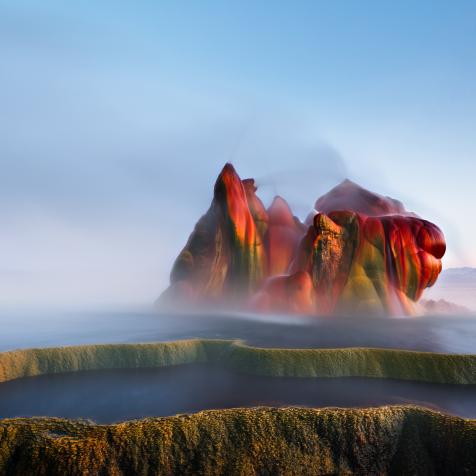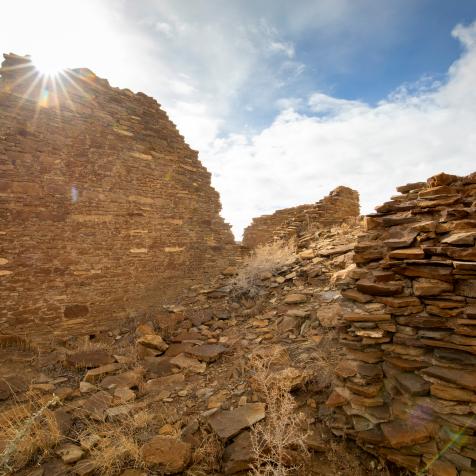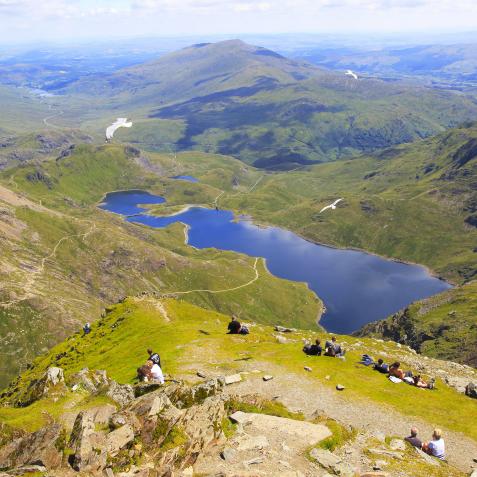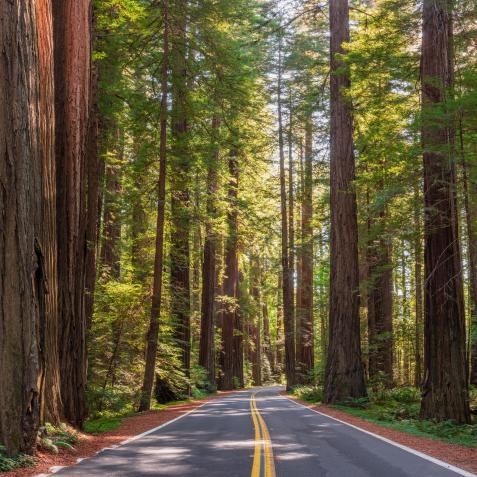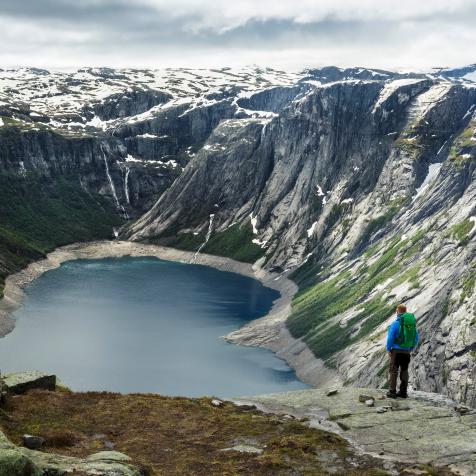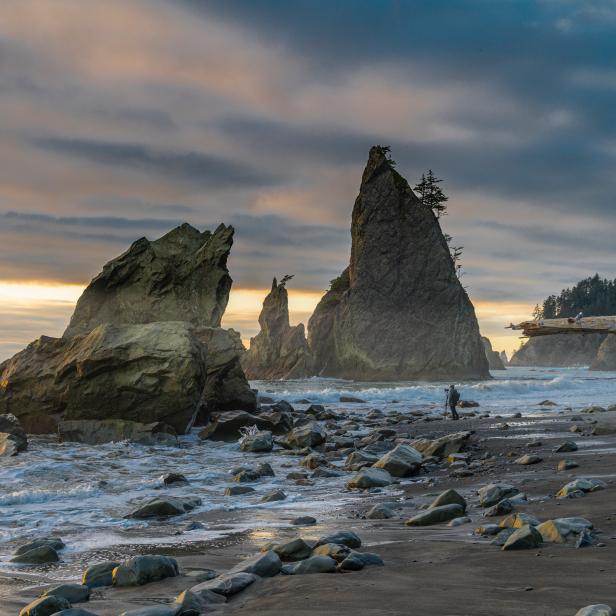
Francesco Vaninetti Photo
Washington’s Olympic Peninsula is a Natural Wonderland
Wild beaches, snow-capped mountains, dense woods, and lush rainforests can be found across America. But did you know that they can all be found within Washington’s Olympic National Park?
The park is located on the Olympic Peninsula, a large arm of land in western Washington that juts out underneath Vancouver and west of Seattle.
There’s a hidden world in this humble peninsula that boasts humpback whales, elk, giant slugs, marmot, mountain goats, and more.
Named after the Olympic Mountains that it encompasses, the park was established in 1938 to preserve the area’s unique wildlife and landscape and encompasses almost a million acres.
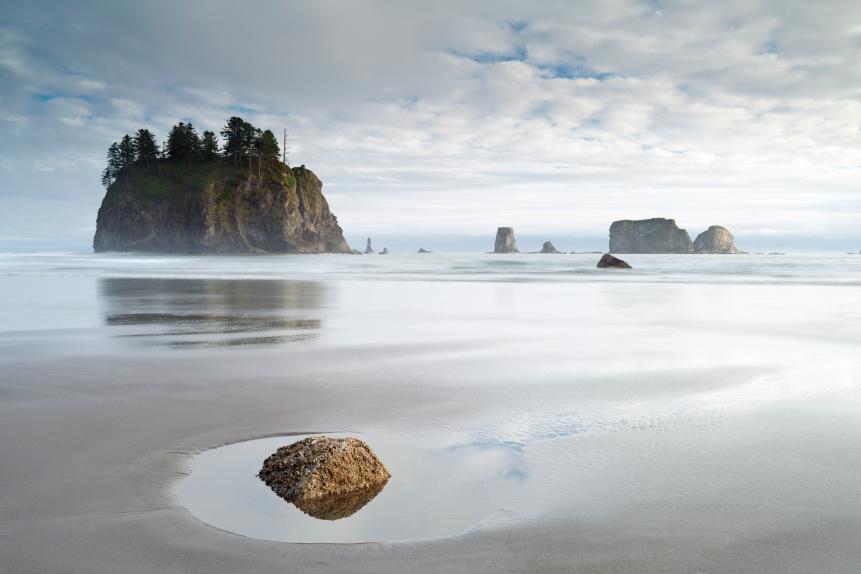
antonyspencer
The beautiful Second Beach on the Olympic National Park Coastline, La Push, WA.
Few parks have the kind of diverse ecosystems that this one contains. The tidepools alone at Kalaloch’s Beach 4 and Ruby Beach on the northwest of the peninsula are home to hundreds of colorful marine species. Anemones, starfish, barnacles, and mussels are just some of the creatures that can be found in these enchanting underwater worlds that emerge when the choppy, churning Pacific Ocean retreats at low tide.
For thousands of marine species, the coastal waters around the Olympic Peninsula are a safe haven, protected by three national wildlife refuges. Sea otters are finally beginning to make a comeback after decades of fur trappings during the 19th and 20th centuries and now more than 1,200 otters live, play, and hunt in the protected waters.

James Randklev
Big Leaf Maples on Hall of Mosses Trail, Hoh Rain Forest, WA.
Further inland, the park’s Hoh Rainforest receives more than 12 feet of rain a year and is one of the few remaining temperate rain forests in the United States. It earns its name from the winding Hoh River that carves its way from Mount Olympus to the Pacific Coast. The name is believed to have derived from Native American languages; possibly the Quilete word “Ohalet” which means “fast-moving water” or “snow water”. The lush rainforest with its mosses and ferns that carpet the floor and blanket tree trunks has both coniferous and deciduous species in its folds. The Hall of Mosses Trail is a particular highlight as it takes hikers through an old-growth forest with a grove of maple trees draped with abundant club moss. The Hoh River Trail is another stunning walk, and culminates 18.5 miles later at the Blue Glacier moraine, looking up at the indomitable Mt Olympus.

Erich Schultz / 500px
Autumn at Lake Crescent, Clallam County, WA.
Just west of Port Angeles, a 20,000-strong city on the north of the peninsula, lies Lake Crescent, a body of water that locals claim is bottomless. Rustic dirt roads line the north end of the blue-green lake, which visitors can kayak or paddleboard across. If a lake and being surrounded by the ocean isn’t enough, there are stunning waterfalls too. Up the Quinault River is the aptly-named Enchanted Valley, where water cascades of 3,00ft-tall cliffs, giving the area the nickname “Valley of 1,000 waterfalls”.
The park also offers plenty of panoramic views from its dramatic mountainscape. Hurricane Ridge trail has views spanning all the way from Mt Baker to Victoria in British Columbia in Canada, including snow-capped mountain peaks, craggy ridges, and alpine trees. Mount Ellinor Trail is another hike offering panoramic views of the peninsula and, if you’re lucky, views of the stunning Mount Rainier.









